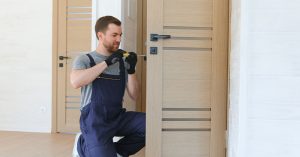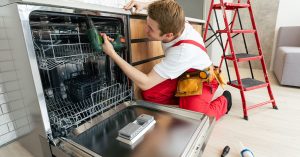Why Window Replacement Matters in Commercial Renovation
Window systems are often overlooked during commercial upgrades, yet they can have one of the biggest impacts on both function and appearance. Older buildings tend to have windows that are drafty, faded, or mismatched with other improvements. Therefore, upgrading them is one of the most practical ways to modernize the entire look and performance of a building.
In other words, replacing outdated windows is not just about aesthetics. It affects energy performance, occupant comfort, and property value. For instance, buildings with new window systems can reduce heating and cooling demands, which results in noticeable energy savings.
Energy Efficiency and Cost Reduction
One of the most significant benefits of commercial window replacement is improved energy efficiency. Modern glazing technology provides much better insulation than older models. That is to say, windows that are double or triple-glazed can dramatically reduce heat loss in the winter and heat gain in the summer.
As a result, the building becomes easier to manage in terms of internal temperature control. HVAC systems do not have to work as hard, and maintenance costs can decrease. This, in turn, lowers operational expenses and boosts the overall sustainability of the property.
Moreover, energy-efficient upgrades can sometimes qualify for rebates or incentives. Property managers should explore local programs to make the investment even more worthwhile.
Visual Appeal and First Impressions
From a design standpoint, old or damaged windows can make an otherwise attractive building look neglected. However, clean lines, consistent frames, and modern glazing offer a sharp, updated appearance that enhances curb appeal immediately.
New windows also allow more natural light into interior spaces. In addition, they create a more inviting environment for employees, clients, and visitors. For example, tenants may be more inclined to rent or renew leases in a building that feels brighter and more modern.
In commercial real estate, appearance carries weight. A sleek exterior may not secure a lease on its own, but it certainly helps set the right tone.
Improved Function and Durability
Outdated windows often have operational issues. They stick, rattle, or fail to open at all. Meanwhile, modern systems slide and lock easily and are built with materials designed for long-term durability. That means fewer service calls and reduced liability for injuries caused by faulty mechanisms.
Likewise, new windows can be designed to block more sound from outside. This is especially important for buildings in urban areas or near highways. Employees are more productive when they are not distracted by noise.
To clarify, window upgrades can solve more than visual concerns. They improve day-to-day use and long-term reliability as well.
Safety and Code Compliance
Many commercial properties were built under older safety standards. Therefore, some window systems may no longer meet current fire code, egress, or security requirements. In these cases, replacement becomes more than a preference—it becomes a necessity.
Modern commercial window systems are built with stronger frames, impact-resistant glass, and advanced locking mechanisms. In other words, they protect occupants more effectively against break-ins and accidents.
Additionally, some building codes require windows to meet specific thermal performance or structural strength benchmarks. Replacing old units ensures the building remains compliant with local regulations, which can help avoid fines and protect insurance coverage.
Supporting Sustainable Practices
Sustainability plays a growing role in commercial construction and renovation. Businesses are increasingly held to standards that reflect environmental responsibility. Consequently, replacing windows with energy-efficient models supports long-term sustainability goals.
Likewise, many window materials are now recyclable or manufactured using eco-conscious processes. Choosing high-performance, low-impact systems reflects positively on the company’s values and environmental strategy.
This is especially important for companies pursuing certifications such as LEED or ENERGY STAR recognition. Windows contribute directly to those standards and should not be overlooked during planning.
Matching Windows to Modern Architecture
As buildings evolve, so do their visual identities. Replacing windows provides an opportunity to align the exterior look with new branding or design features. For example, a facility that upgrades its signage, cladding, and lighting may look disjointed if the windows are left untouched.
Similarly, architects and project managers can select window styles that blend better with updated interior layouts. That includes options like larger panes, custom tints, or minimalist frame designs.
When modernizing a commercial space, every detail counts. Matching the window systems to the rest of the design helps create a cohesive final result.
Better Indoor Comfort and Natural Lighting
Natural light has a major influence on the indoor environment. Studies consistently show that access to daylight improves employee morale, productivity, and general well-being. New commercial window systems maximize natural light without the drawbacks of glare or excess heat.
Meanwhile, better insulation means more stable indoor temperatures. That is to say, occupants no longer experience drafts near windows or extreme temperature differences between rooms.
With the right upgrades, facilities can balance efficiency with occupant comfort, creating a healthier and more pleasant space for everyone inside.
Reducing Maintenance and Service Needs
Old windows tend to break down more often. Latches wear out, seals fail, and glass becomes harder to clean. In contrast, modern systems are designed with low-maintenance materials like aluminum or vinyl and include features that make cleaning easier.
That means property management teams spend less time on upkeep and fewer resources replacing damaged parts. For instance, tilt-in sashes simplify routine maintenance for janitorial staff and reduce the need for ladders or specialty tools.
Investing in replacement helps avoid the cycle of repeated repairs. In many cases, it is the smarter long-term choice over short-term fixes.
Planning for Long-Term Value
When evaluating return on investment, window replacement may seem like a large upfront cost. However, the long-term financial and functional benefits typically outweigh the initial expense. That includes savings on energy, reduced repair costs, and higher property value.
In real estate, every improvement should offer something measurable. Windows check several boxes at once. They improve function, boost curb appeal, lower energy consumption, and reduce maintenance efforts.
For commercial property owners thinking ahead, these upgrades offer real strategic value.
Choosing the Right Contractor
Window installation is not a casual weekend project. Commercial properties require precision and experience due to size, building envelope design, and safety requirements. That is why it is important to work with teams experienced in Windows and Doors Replacement and Installation.
Choosing a contractor who specializes in this field means fewer delays, better results, and a safer job site. You can also reach out to a professional to assess which window systems are best suited for your building type.
Make sure to ask about timelines, product options, warranties, and examples of past commercial projects. A clear understanding of the process helps you plan better and avoid unexpected disruptions.
Exploring Your Options
There is no one-size-fits-all solution for commercial windows. Options range from fixed units to operable vents, with various glazing, tint, and frame materials to choose from. Therefore, building owners should consider how each choice will affect daylighting, airflow, energy usage, and cost.
For instance, large-pane fixed windows are great for storefronts but may not be ideal for spaces that require regular ventilation. On the other hand, operable windows help improve airflow in offices or healthcare facilities.
If you want to evaluate product types, performance levels, or custom configurations, you can find helpful insights on Windows and Doors Replacement and Installation resources.
FAQ
1. How often should commercial windows be replaced?
Most commercial windows last 20 to 30 years, depending on materials and conditions. If you’re seeing drafts, high energy bills, or visible wear, it’s probably time to consider replacement.
2. What’s the best type of window for energy efficiency?
Double-glazed or triple-glazed windows with low-E coatings are among the most efficient. Frame material also matters, with vinyl and fiberglass offering strong performance.
3. Do new windows really lower heating and cooling costs?
Yes. Improved insulation helps stabilize indoor temperatures, so HVAC systems run less. This reduces energy bills and increases system lifespan.
4. Can I replace windows without disrupting tenants?
Yes, with careful scheduling and proper coordination. Many upgrades can be done in phases to minimize disruption during business hours.
5. Are permits required for commercial window replacement?
Usually yes. Permits depend on the scope of work and local codes. Your contractor should help secure the right approvals before work begins.



